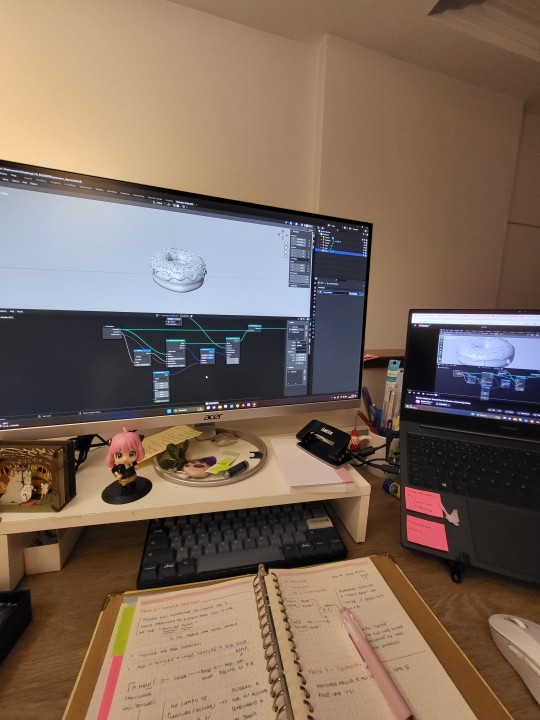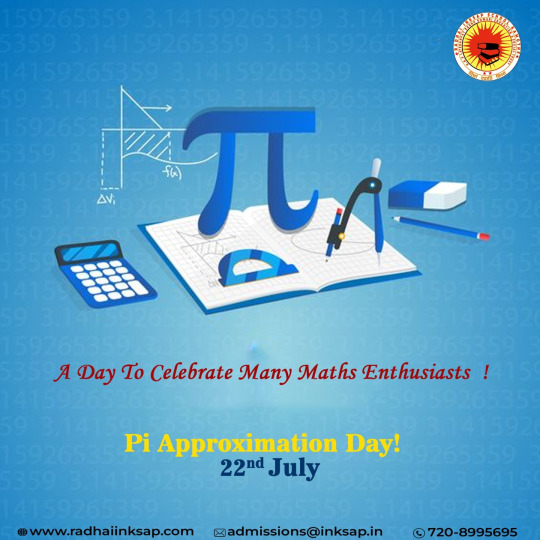#Blended Learning
Explore tagged Tumblr posts
Text

guaranteed masterpiece is about to hit big screen 🍿
took me about a week to finish this. really makes me want this movie to happen by a looking at it
1K notes
·
View notes
Text

Зачаток коровы 🐄
#русский tumblr#личный блог#русский тамблер#личный пост#русский блог#турумбочка#русский пост#блог о жизни#самообразование#моделирование#3d model#blended learning
20 notes
·
View notes
Text

11.05.23
Hoje o dia foi cheio de pequenas coisas, mas ainda assim pareceu bem devagar.




A primeira parte do dia consistiu em ir na Liberdade:
BORI CAFÉ: pequena portinha no caos do lado de lá da liberdade. Ambiente pequeno mas muito aconchegante, apenas com o essencial (o essencial mais charmoso e fofo ♡). O café em si é simplesmente delicioso, um gostinho de café que estava com saudade. A comidinha ficou por conta do cookie perfeito do OOEY COOKIE, sabor doce de leite com nozes. Realmente não tem como errar nesse combo
FONOMAG: acabei não tirando fotos, mas fomos conhecer essa livraria que vimos ha algum tempo no Instagram. Tinha muitca coisa bacana, mas infelizmente era muito caro. :(((
MOMO LAMEN: Fazia tempo que não comia o lamen deles, e noooosssaaa estava uma delícia!!! Que saudade de um bom chashyu braseado/maçaricadooo. O meu pedido foi um Shio Chasyu Lamen e estava 10/10.




A segunda parte do dia se resume a essas 4 imagens: CONSEGUI FAZER O DONUT NO BLENDER!!!
Sinceramente, me sinto invencível. Não tem mais aqua barreira inicial. Agora quero fazer mais tutoriais!! Uhuul !
🎧: já ouviram Ayano Kaneko? Esse álbum aqui é muito legal!! 🐰🌸🐥🌻🍀
13 notes
·
View notes
Text



2 notes
·
View notes
Text

#education technology#higher education#online education#educate yourselves#education#learning disability#blended learning#online learning#distance learning#exam preparation#exam study#examination#ai technology#technology#artificial intelligence
2 notes
·
View notes
Text
Blended Learning in Nursing Education: Podcast
This podcast discusses blended learning in nursing education, the combination of in-person and online instruction. Benefits of this approach, such as flexibility for adult learners and the creation of online learning communities. Finally, it promotes engagement through social media platforms. AI-generated presenters present this information using…
0 notes
Text
Blended Learning: Revolutionising Education and Training for RTOs

Blended learning has become a transformative approach in modern education, combining traditional face-to-face instruction with online learning methods. For Registered Training Organisations (RTOs), adopting blended learning not only enhances the quality of training but also ensures flexibility, engagement, and better outcomes for students. This article explores what blended learning is, its impact on RTOs, the different types of blended learning, and why it is vital for vocational education and training (VET).
What is Blended Learning?
Blended learning integrates the strengths of both in-person and online education, creating a seamless learning experience. It allows students to benefit from the personal interaction of classroom settings while leveraging digital tools and platforms to learn at their own pace. This approach enhances accessibility, making learning more inclusive for diverse student demographics, including working professionals and remote learners.
Types of Blended Learning
There are several models of blended learning, each catering to different teaching and learning needs. Below are the most common types:
1. Rotation Model
Students rotate between different learning modalities, such as classroom instruction, online learning, and practical workshops, based on a fixed schedule or teacher’s discretion. This model works well for balancing theory and practice in RTO programs.
2. Flex Model
In this model, most content is delivered online, with instructors providing support as needed. This approach is particularly beneficial for students who need greater control over their schedules, such as part-time learners or those balancing work and study.
3. Flipped Classroom
In the flipped classroom model, students review content online before attending face-to-face sessions. Classroom time is then used for discussions, problem-solving, and hands-on activities, promoting active learning.
4. Enriched Virtual Model
This model allows students to complete most of their coursework online while occasionally attending in-person sessions for assessments or practical training. It is ideal for programs that require minimal physical presence, such as administrative or theory-based qualifications.
Impact of Blended Learning on RTOs
Blended learning has significantly transformed the operations and effectiveness of RTOs. Here’s how:
1. Increased Accessibility and Flexibility
Blended learning enables RTOs to cater to a broader range of learners, including those in remote areas, working professionals, and students with varying schedules. By combining online and in-person learning, RTOs can deliver training that adapts to diverse needs.
2. Improved Student Engagement
Digital tools such as interactive modules, videos, and virtual simulations make learning more engaging and dynamic. When combined with face-to-face instruction, these tools ensure students stay motivated and actively participate in their learning journey.
3. Cost-Effective Delivery
For RTOs, blended learning reduces the need for physical infrastructure and travel expenses, especially for students and trainers located in different regions. Online resources can also be reused, lowering costs over time.
4. Enhanced Compliance and Record-Keeping
Blended learning platforms often include features that simplify compliance with the Standards for RTOs 2015. They enable detailed tracking of student progress, assessments, and attendance, making it easier for RTOs to meet audit requirements.
5. Better Learning Outcomes
The combination of self-paced online learning and hands-on in-person training ensures students gain both theoretical knowledge and practical skills. This approach helps students retain information better and apply it effectively in real-world scenarios.
Challenges of Blended Learning for RTOs
While blended learning offers numerous benefits, RTOs must address some challenges:
Technology Access: Ensuring all students have reliable access to devices and the internet.
Trainer Readiness: Providing professional development for trainers to effectively use blended learning tools and techniques.
Student Adaptation: Supporting students who may be unfamiliar with online learning platforms or struggle with self-paced learning.
Best Practices for Implementing Blended Learning in RTOs
Leverage Quality Resources: Use compliant learning resources that align with training packages and meet the Standards for RTOs 2015.
Invest in Technology: Choose robust learning management systems (LMS) that support online modules, assessments, and tracking.
Train Trainers: Equip trainers with the skills to deliver engaging and effective online and in-person sessions.
Support Students: Provide clear instructions, technical support, and guidance to help students navigate blended learning platforms.
Monitor and Improve: Continuously gather feedback from students and trainers to refine the blended learning approach.
Why Blended Learning is Essential for VET
Blended learning aligns perfectly with the goals of vocational education and training. It supports competency-based learning by combining flexible online content with practical, hands-on training in a physical or simulated environment. For industries requiring highly skilled workers, this approach ensures students are well-prepared for real-world challenges.
0 notes
Text
Artificial Intelligence in Education and Work
Possibilities and today's roadmap for education and jobs
Lucubrate Magazine, November 17th, 2024 When you think of artificial intelligence (AI), it’s easy to picture robots taking over jobs, but the reality is quite different! AI is creating a whole new wave of job opportunities. One exciting area is education — AI can help tailor learning experiences to individual needs, making it easier for folks to gain the skills they need for today’s job…

View On WordPress
#AI#AI Language Model#AI technologies#AR technology#Arteficial intelligence#Blended Learning#Collaborative Learning#Development#Digital tools#Education#Future#Job creation#Job market#LMS#Skills#Social Media#technology#VR#work
0 notes
Text
Blended Standard First Aid With CPR & AED Level C Training In North York

Standard First Aid and CPR Level C training can make a critical difference in emergencies, empowering individuals to act swiftly when someone collapses unexpectedly. Panic often arises when bystanders are unsure how to respond, but first aid, CPR, and AED training provide the essential skills to handle such situations effectively. In North York, F.A.S.T. Rescue offers a Blended Standard First Aid With CPR & AED Level C Training program, combining the convenience of online learning with hands-on experience to ensure participants are fully prepared for real-life emergencies.
What is Blended Standard First Aid?
Blended learning combines online instruction with in-person practical sessions, providing an effective and flexible approach to learning. In the Blended Standard First Aid course, participants complete part of the theoretical portion online at their own pace and then attend a hands-on in-class session for practical skills.
This model works well because it allows busy individuals to learn at their convenience while still gaining crucial hands-on experience. You don’t have to sacrifice effectiveness for convenience—blended learning offers the perfect balance.
Understanding CPR and AED Level C Training
CPR Level C focuses on techniques for saving lives in a wide variety of emergencies. It covers performing CPR on adults, children, and infants, addressing conscious and unconscious choking, and how to use an automated external defibrillator (AED) properly.
The AED is a device designed to restore a normal heart rhythm in people experiencing sudden cardiac arrest. It’s simple enough for anyone to use, and having CPR combined with AED training increases the chances of survival exponentially.
Why Choose F.A.S.T. Rescue in North York?
F.A.S.T. Rescue is known for its top-notch training programs in North York. Whether you're a first-time learner or need recertification, the team of highly qualified instructors provides expert guidance. They are committed to ensuring participants not only understand the theory but can apply these skills in real-world scenarios.
Their convenient North York location and flexible course schedules make it easy for anyone to participate, whether you're an individual or an organization looking to certify employees.
Course Details for Blended Standard First Aid
The course is divided into two main parts:
Online Learning: Participants begin with self-paced online modules covering essential first-aid knowledge.
In-Class Training: After completing the online portion, participants attend a practical, hands-on session where they practice skills like bandaging, CPR, and using an AED.
The entire course typically takes 8-16 hours to complete, with online learning often taking less time for quick learners. Upon completion, you receive certification, which is valid for three years.
The Online Learning Component
The online section of the course is perfect for those who want flexibility. You can log in, watch instructional videos, read material, and complete quizzes at your own pace. This makes it easier to balance work, family, and learning.
Topics in the online modules include:
How to handle different types of injuries
How to assess emergencies
Basics of CPR and AED
In-Class Practical Training
While the online section is important, nothing beats hands-on practice. The in-class portion allows participants to practice bandaging, performing CPR, and using an AED on realistic dummies. Simulations of real-life emergencies help prepare students for the unexpected, and the supportive environment allows for plenty of feedback and questions.
Certification and Validity
After completing the course, participants receive a First Aid, CPR, and AED certification, valid for three years. If you want to keep your skills sharp, recertification options are available before the certificate expires.
Key Benefits of Learning First Aid and CPR
Knowing first aid, CPR, and how to use an AED boosts confidence in emergencies. Whether you’re at home, at work, or out in the community, these skills are invaluable. Many workplaces require staff to be trained, and it's also crucial for parents, teachers, and caregivers.
The Role of AED in First Aid Training
AED training is a lifesaving skill that everyone should have. AEDs can now be found in most public places, including airports, malls, and gyms. Knowing how to use one could save a life, whether at work or in a public setting.
Who Should Take This Course?
Anyone can benefit from this course, especially:
Employees in industries where first aid certification is a legal requirement
Parents and caregivers who need to be prepared for emergencies
Teachers responsible for students' safety
Individuals looking to enhance their life-saving skills
Workplace First Aid Compliance
Ontario has strict regulations regarding workplace safety, and having trained staff is not just recommended—it's mandatory for certain industries. This course ensures compliance and fosters a safer work environment.
Frequently Asked Questions About Blended First Aid With CPR & AED
1. What makes blended learning different? Blended learning offers flexibility by combining online modules with in-person training.
2. How long does the certification last? The certification is valid for three years.
3. Can I take this course if I have no prior experience? Yes, no prior experience is required.
4. What is included in the in-person training? Practical skills like CPR, AED use, and handling various injuries.
5. Is this course recognized across Canada? Yes, the certification is recognized nationwide.
Conclusion
Learning first aid, CPR, and AED skills is not just beneficial—it’s crucial for everyone. F.A.S.T. Rescue’s Blended Standard First Aid with CPR & AED Level C Training in North York offers a convenient, effective, and hands-on approach to life-saving training. By combining online learning with in-class practice, this course is ideal for busy individuals who still want to be well-prepared in emergencies.
#Standard First Aid and CPR Level C training#North York#blended learning#First Aid and CPR#First Aid Training#Training
0 notes
Text
Blended Learning: A Comprehensive Guide
Blended learning is an educational approach that combines traditional face-to-face instruction with online learning experiences to provide a more personalized, flexible, and effective learning environment. Blended Learning: A Comprehensive Guide This hybrid model has gained popularity in recent years due to its potential to enhance student engagement, improve academic outcomes, and increase…
0 notes
Text

#mathematics#maths fun#pi approximation day#schools in kamothe#radhai inksap school#education#radhaiinksap#school#career#cbse school#blended learning#best school in kamothe#school system#cbse board
0 notes
Text
Blended learning provides the required interaction between teachers and students but becomes a problem when students don't have laptops and internet access. Even technical issues like hardware problems that cause malfunctioning computers can interrupt a VILT class.

0 notes
Text
Blended Mode of Teaching and Learning: Revolutionizing Education in the Digital Age
The landscape of education is undergoing a seismic shift. Traditional, brick-and-mortar classrooms are no longer the sole domain of learning. Educators are embracing a dynamic new approach – the blended mode of teaching and learning, also known as blended learning or infoprolearning. This innovative methodology seamlessly integrates face-to-face classroom instruction with technology-driven online learning experiences, fostering a more engaging, personalized, and effective learning environment.

What is Blended Learning?
Blended learning defies a singular definition. It's a spectrum, a tapestry woven from the strengths of both traditional and online learning. A 2023 study by the Online Learning Consortium [stats on blended learning adoption needed] highlights the surging popularity of this approach, with a significant portion of educational institutions incorporating blended elements into their curriculum. At its core, blended learning creates a synergistic relationship between classroom time and online activities.
The Advantages of Blended Learning
The blended mode of teaching and learning offers a plethora of advantages for both educators and students. Here's a closer look at some of its most compelling benefits:
Enhanced Engagement: Blended learning goes beyond rote memorization and passive lectures. Online modules, interactive simulations, and digital resources can make learning more engrossing and stimulating. Students can explore topics at their own pace, revisit complex concepts, and delve deeper into areas of personal interest.
Personalized Learning: Blended learning caters to the diverse learning styles and needs of individual students. Differentiated instruction, a hallmark of blended learning, allows educators to tailor online activities and assignments to cater to students' varying strengths and weaknesses. Struggling students can receive additional support through online tutorials or individualized feedback, while advanced learners can be challenged with more complex tasks.
Flexibility and Accessibility: Blended learning dismantles the temporal and spatial constraints of traditional classrooms. Online resources are accessible 24/7, empowering students to learn anytime, anywhere, at a pace that suits their schedules. This is particularly beneficial for students with busy schedules or those facing geographical limitations.
Development of Digital Literacy Skills: In today's digital world, possessing strong digital literacy skills is paramount. Blended learning fosters the development of these crucial skills by exposing students to various online tools and platforms. Students learn to navigate online learning environments, conduct research effectively using digital resources, and cultivate critical thinking skills in the digital domain.
Improved Collaboration and Communication: Blended learning doesn't necessitate isolation. Online discussion forums, collaborative tools, and virtual meeting platforms allow students to connect with peers and instructors beyond the confines of the classroom. This fosters a culture of collaboration and effective communication, preparing students for success in an increasingly interconnected world.
Effective Use of Classroom Time: By delegating foundational knowledge acquisition to online components, blended learning liberates valuable classroom time for more interactive and engaging activities. Educators can focus on facilitating discussions, providing personalized feedback, and guiding students through complex problem-solving exercises, ultimately maximizing the impact of in-person instruction.
Data-Driven Instruction: Many online learning platforms provide educators with valuable data and analytics on student performance. This data can illuminate student strengths and weaknesses, allowing educators to tailor their instruction and identify areas for improvement, leading to a more data-driven approach to teaching.
Challenges and Considerations
While the benefits of blended learning are substantial, it's not without its challenges. Here are some factors educators and institutions need to consider:
Technology Availability: The effectiveness of blended learning hinges on reliable access to technology. Ensuring equitable access to computers, tablets, and a stable internet connection for all students is crucial.
Technical Support: Integrating technology smoothly into the learning process necessitates adequate technical support. Institutions need to invest in robust IT infrastructure and provide students with readily available technical assistance.
Pedagogical Design: Blended learning requires a shift in instructional strategies. Educators need to be equipped with the necessary skills to effectively design and implement blended learning experiences, ensuring a seamless integration of online and offline components.
The Future of Blended Learning
The future of education is undeniably intertwined with blended learning. As technology continues to evolve and learning platforms become more sophisticated, the blended mode of teaching and learning is poised to become the paradigm for education delivery. By harnessing the power of technology and the irreplaceable value of face-to-face instruction, blended learning has the potential to revolutionize education, making it more engaging, personalized, and effective for all learners.
0 notes
Text
Pengertian dan Manfaat Blended Learning Bagi Mahasiswa

Pengertian dan Manfaat Blended Learning Bagi Mahasiswa
Pembelajaran Blended learning adalah salah metode gabungan antara pembelajaran tatap muka (PTM) dengan pembelajaran daring (online). Blended Learning diharapakan mampu memanfaatkan keunggulan dan saling menutupi kekurangan pada metode pembelajaran tatap muka dan daring agar menciptakan pengalaman belajaran yang lebih efektif dan fleksibel.
Pengertian Blended Learning
Blended learning adalah kombinasi antara pembelajaran daring (online) dan pembelajaran tatap muka (offline) sehingga konsep ini dapat dikatakan sebagai sebuah pendekatan pendidikan yang menggabungkan bahan-bahan pembelajaran pendidikan online dan kesempatan untuk interaksi dalam kelas. Blended Learning juga sering disebut sebagai teknologi-mediated instruction, web-enhanced instruction, atau mixed-mode instruction.
Pembelajaran daring dapat memberikan fleksibilitas dan aksesibilitas yang lebih besar, sementara pembelajaran tatap muka memberikan interaksi sosial dan dukungan langsung dari guru.
Dalam konsep blended learning, mahasiswa dapat belajar secara mandiri melalui materi pembelajaran online yang telah disediakan oleh guru. Setelah itu, mahasiswa dapat bertemu dengan guru dan teman sekelas untuk diskusi dan kegiatan tatap muka, seperti diskusi kelompok atau praktikum.
Blended learning memungkinkan mahasiswa untuk belajar dengan kecepatan mereka sendiri dan mengembangkan kemampuan untuk memanfaatkan teknologi untuk belajar secara efektif. Dengan demikian, konsep ini dapat membantu meningkatkan kualitas pembelajaran dan hasil belajar mahasiswa.

Manfaat Blended Learning untuk Pembelajaran
Blended learning menjadi semakin terkenal sejak penyebaran Covid-19 yang meningkat, terutama karena wabah tersebut membuat banyak negara, termasuk Indonesia, menghentikan pembelajaran tatap muka di sekolah. Dampaknya pada dunia pendidikan sangat terasa, dengan peserta didik yang tidak dapat menghadiri sekolah.
Hal ini mengakibatkan pembelajaran terhenti karena sulit bagi guru untuk memberikan penjelasan secara efektif seperti yang dapat dilakukan dalam kelas. Blended learning menjadi solusi yang tepat untuk menerapkan pembelajaran daring atau PJJ, memungkinkan guru untuk memberikan pembelajaran secara online dan offline secara efektif. Blended learning memiliki beberapa manfaat, di antaranya:
Fleksibilitas
Mahasiswa dapat belajar secara mandiri dengan jadwal yang fleksibel melalui konten pembelajaran daring, dan juga dapat bertemu dengan guru dan teman sekelas di lingkungan tatap muka dengan jadwal yang telah ditentukan.
Aksesibilitas
Blended learning memungkinkan mahasiswa dari daerah terpencil atau dengan keterbatasan akses transportasi untuk mengakses pembelajaran dengan mudah melalui internet.
Interaksi sosial
Pembelajaran tatap muka memungkinkan mahasiswa untuk berinteraksi langsung dengan guru dan teman sekelas, yang dapat meningkatkan kemampuan sosial dan kemampuan berbicara di depan umum.
Dukungan Individual
Mahasiswa dapat menerima dukungan individual dari guru melalui pembelajaran daring, sementara tatap muka memungkinkan guru untuk memberikan dukungan yang lebih personal.
Efektivitas Pembelajaran
Dengan kombinasi antara pembelajaran daring dan tatap muka, mahasiswa dapat mengembangkan kemampuan untuk belajar secara mandiri dan memanfaatkan teknologi untuk belajar secara efektif, sehingga dapat meningkatkan hasil belajar mereka.
Dalam keseluruhan, blended learning memungkinkan mahasiswa untuk memperoleh manfaat dari kedua metode pembelajaran online dan offline, sehingga dapat meningkatkan kualitas pembelajaran dan hasil belajar mereka secara keseluruhan.
Apa Saja Tahapan Blended Learning ?
Dalam implementasinya terdapat Tahapan Blended learning yang menggabungkan pembelajaran tatap muka (PTM) dan pembelajaran daring (online). Berikut adalah tahapan-tahapan dalam blended learning:
Perencanaan (Planning)
Tahapan blended learning yang pertama yaitu Perencanaan atau planning dalam tahapan ini umumnya aktivitas yang umum dilakukan antara lain menentukan tujuan pembelajaran, selanjutnya memilih model blended learning yang digunakan contohnya seperti model rotasi, model stasiun, model lab, dan model flipped classroom. Lalu di lanjutkan dengan menentukan konten pembelajarun misalnya berupa materi pembelajaran online atau pertemuan tatap muka. Memilih Platform pembelajaran seperti Google Classroom, Moodle, Open Course Ware guna mendukung blended learning. Dan yang terakhir yaitu menentukan tools untuk melakukan penilaian tugas atau tes secara online
Implementasi (Implementation)
Tahapan blended learning yang kedua yaitu Implementasi (Implementation). Tahapan ini merupakan inti dari kegiatan pembelajaran blended learning yaitu berupa aktivitas dimana blended learning itu dijalankan misal nya melalui pembelajaran tatap muka, pembelajaran daring (Open Course Ware & E-Learning), serta aktivitas yang mampu mendukung siswa atau murid untuk beradaptasi dengan seluruh implementasi blended learning pemberian tutorial, sesi tanya jawab, dan umpan balik.
Evaluasi (Evaluation)
Tahapan blended learning yang kedua yaitu Evaluasi (Evaluation). Tahapan ini bertujuan untuk melakukan evaluasi pembelajaran yang sedang berjalan, dimana Guru dapat mengevaluasi efektivitas pembelajaran dengan menganalisis hasil belajar siswa, umpan balik dari siswa, dan observasi terhadap proses pembelajaran. Hasil dari evaluasi ini nantinya akan membantu dalam melakukan perbaikan sistem pembelajaran kedepan dalam implementasi blended learning.
Referensi
0 notes
Text
The Three Big Blunders in E-learning Design and How to Avoid Them

E-learning has revolutionized education and training, making it accessible, flexible, and scalable. However, despite its numerous benefits, e-learning can sometimes fall short of its potential due to common design mistakes. These blunders can lead to disengaged learners, poor retention, and ultimately, ineffective training programs. To ensure your e-learning courses are impactful and successful, it’s crucial to recognize these pitfalls and know how to avoid them. Here are the three big blunders in e-learning design and strategies to circumvent them.
1. Overloading with Information
One of the most significant mistakes in e-learning design is overwhelming learners with too much information at once. This "information overload" can lead to cognitive fatigue, reduced retention, and disengagement.
Why It Happens
E-learning designers often aim to cover as much content as possible, thinking that more information equates to better learning. This is especially true when trying to accommodate comprehensive subjects within limited time frames.
The Impact
When learners are bombarded with excessive information, they struggle to process and retain it. This can result in a shallow understanding of the material and an inability to apply what they’ve learned in real-world situations.
How to Avoid It
Chunking Content: Break down information into smaller, manageable chunks. This helps learners process and retain information more effectively. Use modules or sections that focus on a single concept or skill at a time.
Focused Learning Objectives: Define clear and specific learning objectives for each module. Ensure that all content aligns with these objectives and avoid including extraneous information.
Progressive Disclosure: Introduce information gradually, revealing more complex details as the learner progresses. This method prevents cognitive overload and allows learners to build upon their knowledge incrementally.
Multimedia Balance: Use a mix of text, images, videos, and interactive elements to present information. This variety keeps learners engaged and caters to different learning styles, enhancing comprehension and retention.
2. Lack of Interactivity
Another major blunder in e-learning design is creating passive learning experiences. E-learning that lacks interactivity can result in disengaged learners who struggle to stay motivated and absorb the material.
Why It Happens
Designers sometimes prioritize content delivery over engagement, focusing on conveying information rather than involving learners in the learning process. Additionally, there might be constraints related to time, budget, or technical resources.
The Impact
Passive learning experiences can lead to boredom, disengagement, and lower retention rates. Learners are less likely to internalize and apply the material if they are not actively involved in the learning process.
How to Avoid It
Interactive Elements: Incorporate interactive elements such as quizzes, simulations, drag-and-drop activities, and scenario-based learning. These activities encourage active participation and help learners apply what they’ve learned.
Gamification: Use gamification techniques like points, badges, leaderboards, and challenges to make learning more engaging and fun. Gamification taps into learners’ competitive instincts and can increase motivation.
Real-World Scenarios: Design exercises and assessments that mimic real-world scenarios. This contextual learning helps learners understand the practical application of the content and enhances engagement.
Frequent Feedback: Provide immediate and constructive feedback on learners’ performance. This helps learners understand their progress, reinforces learning, and keeps them motivated.
3. Neglecting User Experience (UX) Design
Neglecting user experience (UX) design is a critical blunder that can undermine the effectiveness of an e-learning course. Poor UX design can lead to frustration, disengagement, and ultimately, a failed learning experience.
Why It Happens
E-learning designers might focus heavily on content creation and overlook the importance of intuitive and user-friendly design. Limited UX expertise and insufficient user testing can also contribute to this issue.
The Impact
A poorly designed user interface (UI) can confuse and frustrate learners, making it difficult for them to navigate the course, access content, and complete activities. This can lead to high dropout rates and poor learning outcomes.
How to Avoid It
Intuitive Navigation: Design a clear and intuitive navigation structure. Ensure that learners can easily find and access the content they need. Use consistent menus, buttons, and icons to guide learners through the course.
Responsive Design: Ensure that your e-learning course is accessible on various devices, including desktops, tablets, and smartphones. A responsive design adapts to different screen sizes and orientations, providing a seamless learning experience.
Accessibility: Make your e-learning course accessible to all learners, including those with disabilities. Use alt text for images, provide transcripts for videos, and ensure that all interactive elements are keyboard navigable.
User Testing: Conduct user testing with a sample of your target audience before launching the course. Gather feedback on the design, navigation, and overall user experience, and make necessary adjustments based on this feedback.
Consistent Visual Design: Use a consistent visual design throughout the course. This includes fonts, colors, and layouts. Consistency helps learners focus on the content rather than getting distracted by varying design elements.
Implementing Best Practices
To ensure your e-learning courses avoid these common blunders and deliver effective learning experiences, consider the following best practices:
Start with the Learner in Mind: Understand your audience’s needs, preferences, and learning styles. Tailor your content and design to meet these needs.
Iterative Design Process: Use an iterative design process that incorporates feedback and continuous improvement. Regularly update and refine your course based on learner feedback and performance data.
Collaborate with Experts: Work with subject matter experts, instructional designers, and UX professionals to create a well-rounded and effective e-learning course.
Continuous Professional Development: Stay updated on the latest trends and best practices in e-learning design. Participate in professional development opportunities and communities of practice.
Conclusion
Effective e-learning design requires a balance of well-organized content, engaging interactivity, and a user-friendly experience. By avoiding the blunders of information overload, lack of interactivity, and poor UX design, you can create e-learning courses that not only capture learners' attention but also enhance their knowledge retention and application. Remember to focus on clear learning objectives, incorporate interactive elements, and prioritize intuitive design to deliver impactful and successful e-learning experiences.
#E-learning Design#Information Overload#Cognitive Fatigue#Learning Retention#Chunking Content#Focused Learning Objectives#Progressive Disclosure#Multimedia Elements#Passive Learning#Interactive Elements#Gamification#Real-World Scenarios#Frequent Feedback#User Experience (UX) Design#Intuitive Navigation#Responsive Design#Accessibility#User Testing#Consistent Visual Design#Learner Engagement#Iterative Design Process#Continuous Improvement#Subject Matter Experts#Instructional Designers#UX Professionals#Professional Development#Learning Outcomes#Training Effectiveness#Online Education#Blended Learning
0 notes